Day 2 of two days of Summer Tours today. It was the reverse of yesterday, with a cooler and cloudy start but brightening up progressively through the day, reaching a very pleasant 21C.
Having explored the coast to the east of Wells yesterday, we headed west today. Our first destination was Holme. As we parked and got out of the minibus, a Quail was singing from the verge opposite. As is typical with this species, we couldn’t see where it was hiding but we heard the distinctive ‘wet-my-lips’ song several times, before it went quiet.
A Sedge Warbler was singing from an elder bush in the reeds a little further on down the track, and while we were watching this in the scope, we heard a Grasshopper Warbler start to reel. We looked over in the direction of the sound and found it perched in the top of some brambles. We had a look at it from where we were, and then crept up closer. The Grasshopper Warbler dropped down into the brambles as we approached, but after a minute or so it climbed back up into the top and started reeling again.
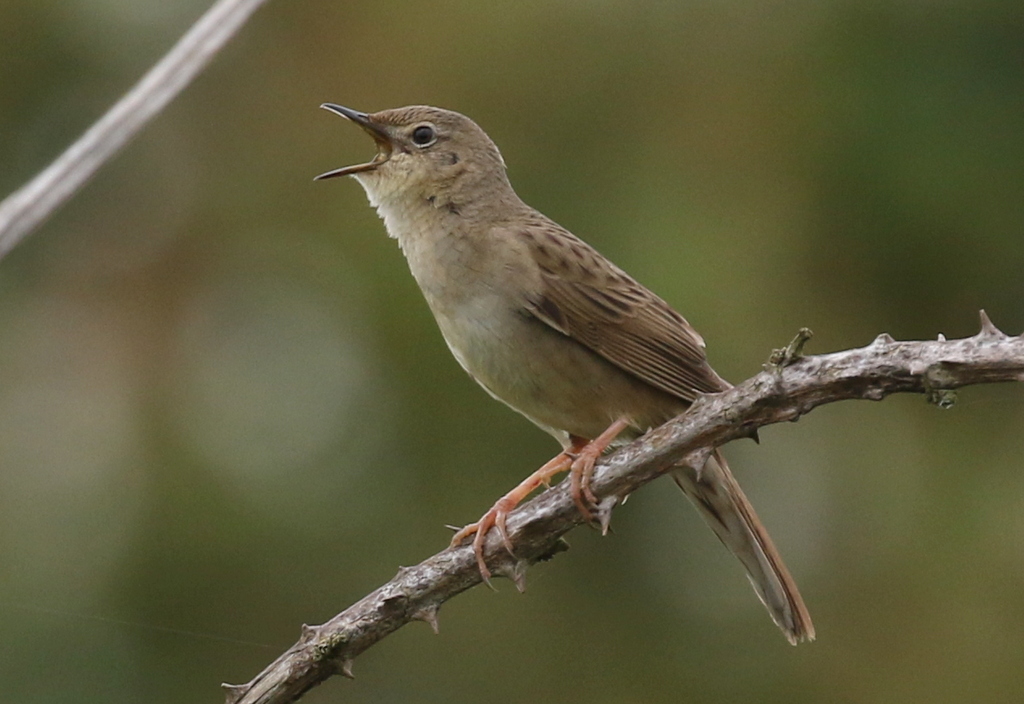
Over the next twenty minutes or so we were treated to some stunning views of this often secretive species. Grasshopper Warbler tends to be very skulking unless it is singing, at which point it will perch out in full view. They normally arrive here in April from their wintering grounds in Africa, then reeling regularly for a while before going quiet as they get down to the business of raising their first brood. They will then reel again more regularly once the first brood is fledged and ahead of a second brood, which is presumably why this one was so vocal today.
It was not just about the Grasshopper Warbler though, as we stood here. A Cuckoo was singing in the distance, out over the grazing marshes. Several Marsh Harriers circled up out in the middle. Two dark chocolate-brown juveniles flew round and perched for a while in the tops of the bushes, and the grey-winged adult male was hunting nearby. A few Common Swifts flew over, heading west.
From here, we walked out to the beach next. A couple of Meadow Pipits were singing in the dunes, fluttering up and parachuting back down. A pair of Stonechats were perched in the bushes with a couple of Linnets. The same or another Cuckoo called in the dunes and we turned to see it flying across just behind us over the saltmarsh.
Lots of Sandwich Terns were flying past just off the beach, with some stopping to hover and plunge dive for fish just offshore. We stood on the tideline for a while and watched them, occasionally hovering and then plunging into the water.
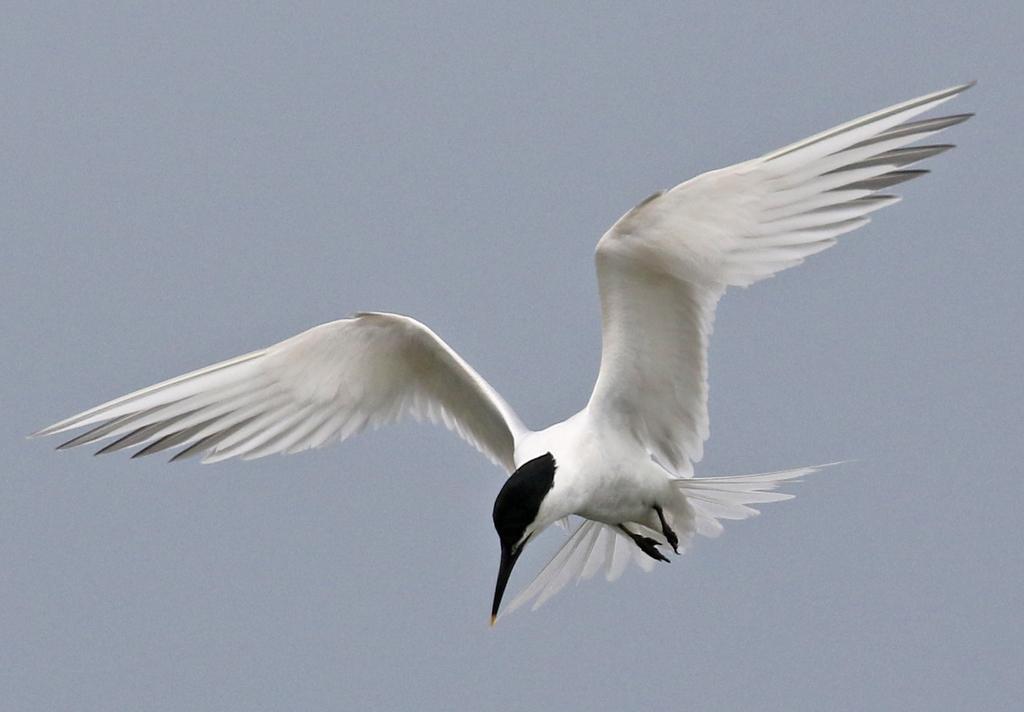
Three Little Terns flew past, dwarfed by the Sandwich Terns. Then we heard another Little Tern call behind us and we noticed a pair were feeding in a tidal channel a little further along. One landed on the edge of the beach, and we had a good look at it in the scope, with its black-tipped yellow bill and white forehead.
Three Common Eider were swimming just offshore, a smart drake, a blacker immature drake and a brown female. As seaduck, it is not such a surprise to see them here as the family of Shelduck which was swimming some way out on the sea, two adults and five tiny ducklings. At least the sea was flat calm today.
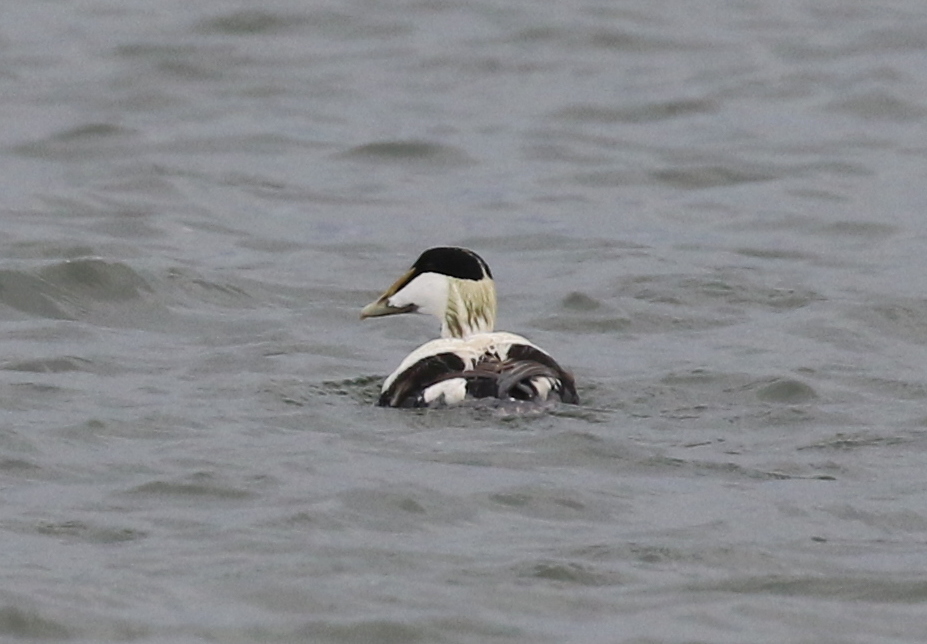
Three Sanderlings flew along the beach and landed on the shingle out on the point. Two of them were still in their darker breeding plumage, but one was silvery grey and white, more typical of how they look when we see them here through the winter. As we walked back through the dunes, a Ringed Plover was on the sandbar in the channel. Then in the dunes we flushed a couple of Cinnabar moths and found lots of yellow-and-black striped Cinnabar caterpillars on the ragwort plants.
We made our way down the coast path to the old paddocks next. It was very busy along here – we subsequently found out it was a Norfolk 100km run underway and competitors were going past non-stop. They were apparently already 36km in and some seemed to be suffering accordingly! There were just a couple of Common Whitethroats and a few Linnets in the bushes.
When we got to the golf course, we could hear a Turtle Dove purring in the trees beyond. We cut across to the back of the car park, but when we got out of the trees it had gone quiet. A Lesser Whitethroat was rattling in the bushes in the corner. The refreshment station for the runners was set up on Beach Road, so it was very busy here too. We made our way back along the entrance track, listening to the Cuckoo still calling inland. It was warming up now and there were fewer birds singing.
Round at Titchwell, we decided to stop for an early lunch. A Blackcap was singing in the trees by the Visitor Centre. After lunch, we headed out onto the reserve. Two Reed Buntings were singing on the edge of the reedbed and we got one in the scope, perched in the top of a small sallow. Several Reed Warblers were busily darting in and out of the reeds below the path.
A Bearded Tit ‘pinged’, and we looked over to see a female come up out of the reeds close to the path. It didn’t stay long though and flew off over the bank to the Thornham side. One or two more Bearded Tits were zooming back and forth over the reeds further back in the reedbed.
Several Marsh Harriers were circling over the back of the reedbed, up and down out of the reeds, including one or two dark chocolate brown juveniles with tawny heads. At one point, we saw one of the males perform a food pass, circling with prey in its talons before dropping it for one of the youngsters to catch – which it failed to do!
There were a few bits and pieces on the reedbed pool – a female Common Pochard was diving with a couple of ducklings, always good to see as this is a scarce breeding species, plus a few Tufted Duck. A Little Grebe appeared out of the reeds and a Great Crested Grebe was swimming with a stripy-headed juvenile briefly at the back.

Looking out at the Freshmarsh from Island Hide, there were lots of waders out in the middle, mostly Black-tailed Godwits and Bar-tailed Godwits. A few smaller Knot were in with them, one or two of them in rusty breeding plumage but mostly in grey non-breeding.
Two Spotted Redshanks were roosting out with the godwits, asleep on one leg. They are still in very smart breeding plumage at the moment, sooty black speckled with silvery white spots on the wings. They are mainly passage migrants here, and these ones are on their way back south already, having been up to Scandinavia to breed. They may have failed, or they could be females, which leave the males behind to brood the eggs and look after the young. Hard to believe, with the Summer Solstice just yesterday, that it is autumn already for some of these waders!
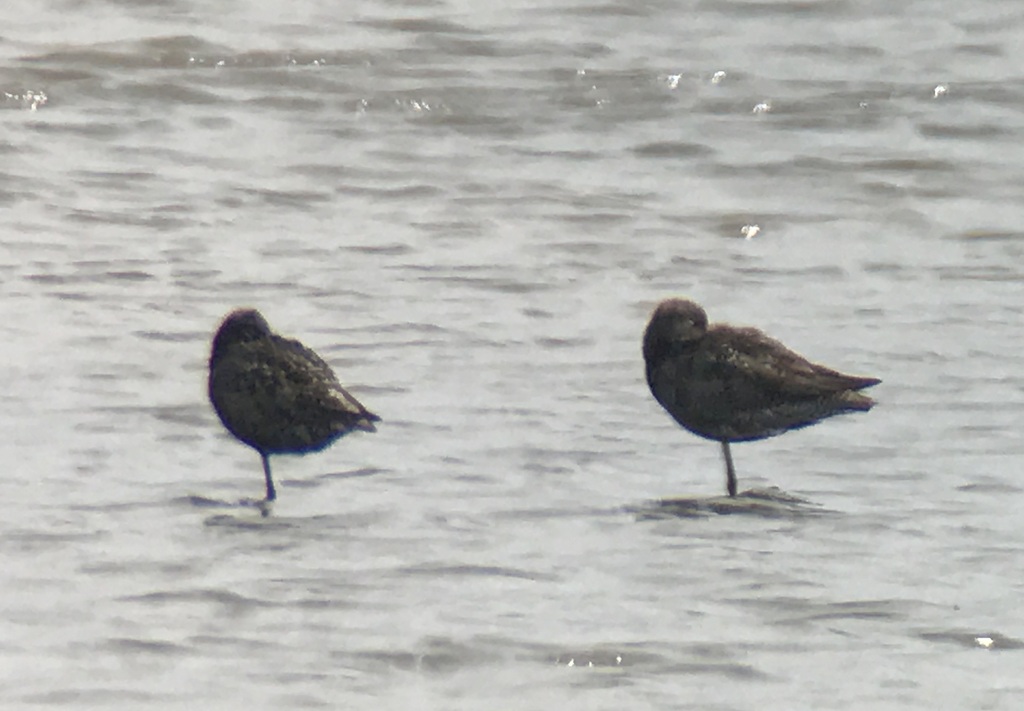
There were lots of Avocets on the Freshmarsh as usual, but today they seemed to be mostly sleeping, sat down on the islands. They gather to moult here later in the summer, and it felt like many of them had already slipped into post-breeding mode. Eventually one came in and started feeding in front of the hide, where we could get a closer look at it.
Somebody in the hide spotted a Bearded Tit low down in the edge of the reeds, so we all gathered for a look. It disappeared in out of view, but reappeared again shortly afterwards, a tawny brown juvenile. It then spent some time out in the open on a reed stem preening, where we could get a good look at it through the scope. A couple of juvenile Moorhens were running around on the mud in front of it.
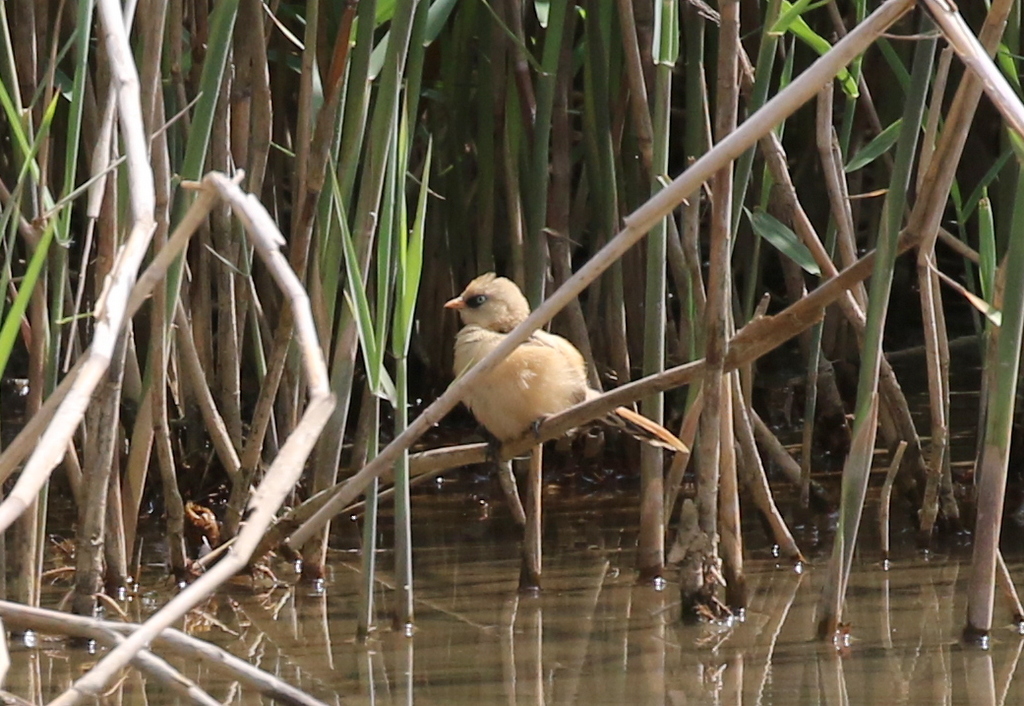
The number of ducks on the freshmarsh is steadily increasing, as birds start to return, particularly Teal, of which there were many more now. The resident drakes are already moulting into eclipse – it is getting harder to find a smart drake Mallard, Gadwall and Shoveler now. There are still good numbers of adult Shelduck, although they will be leaving us to head off to moult in the coming weeks.
The Freshmarsh has been dominated by the gulls all summer, mainly Black-headed Gulls. They are now spending more time loafing on the islands, and looking through we found a single Common Tern in with them. There are still plenty of Mediterranean Gulls too, but we went round to Parrinder Hide for a closer look. Some of the Mediterranean Gulls now rest on the islands in front of the hide, so we could get a great look at them through the scope.
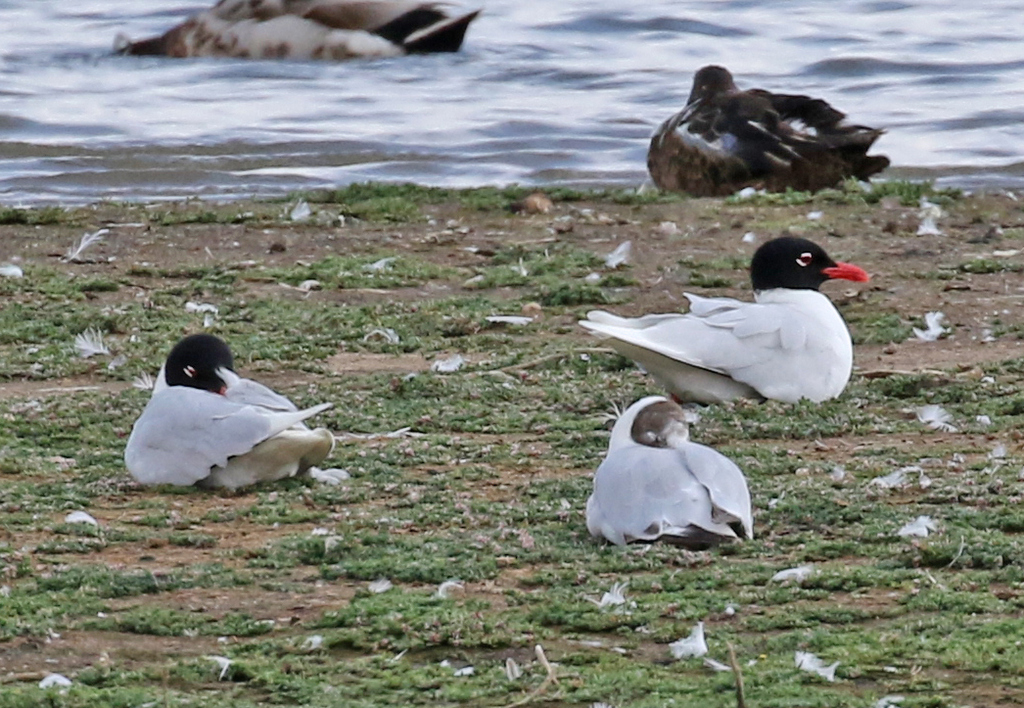
A Little Ringed Plover was bathing in the water on the edge of one of the islands, and we got it in the scope so we could see its golden yellow eye ring. When it had finished it went running along the edge at high speed and we noticed there was a second Little Ringed Plover a little further along. They spent some time chasing each other up and down the shore. A third was on the edge of the island opposite.
From there, we made our way back round to Patsy’s Reedbed. On the way, we stopped to admire a Common Lizard which was basking in the sunshine on the handrail by the path to Island Hide. A second Common Lizard, slightly larger and darker, was doing the same just a little further along.

Several Red-crested Pochards were out on the pool, three males all just starting to moult out of their breeding finery, and a female. A Great Crested Grebe swam past with its head under the water, looking for something to chase after.
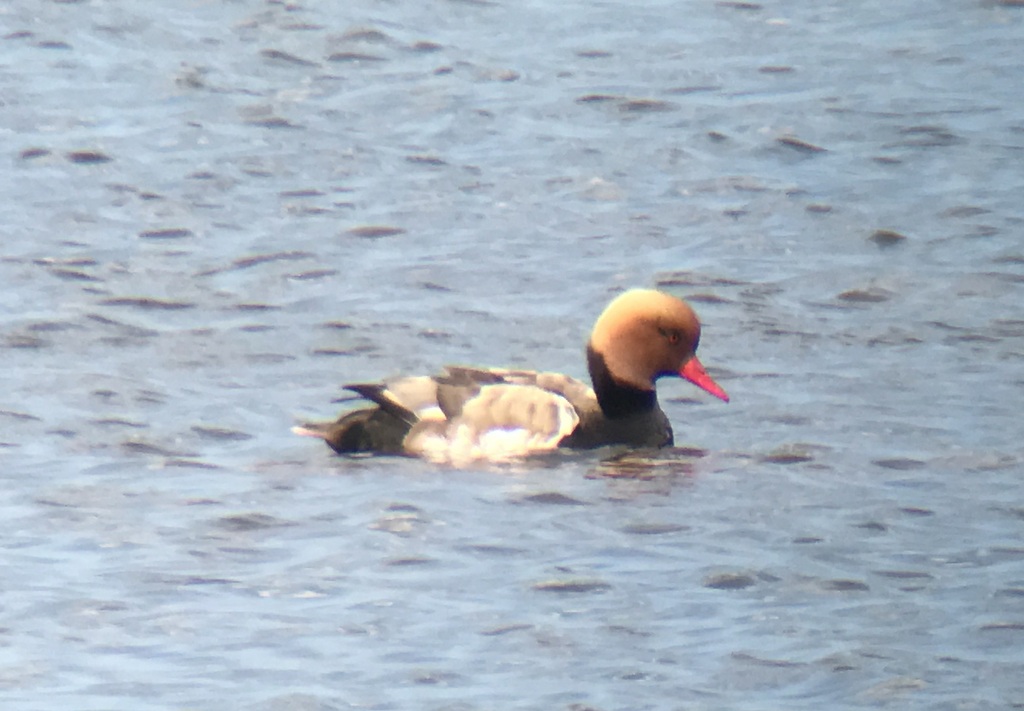
The Marsh Harriers were still coming and going over the reedbed and a smart grey-winged male circled over the back of Patsy’s. We had a quick scan of the reeds for the Purple Heron, but despite the fact it had apparently been seen again earlier, there was no sign of it now. A Grey Heron out in the reedbed had been causing some confusion, and flew across while we were scanning. We had no inclination to stay here or hour trying to see it.
It was lovely sitting in the sunshine watching the comings and goings out here, but it was now time to head back anyway. As we walked along the tank road, a Cetti’s Warbler shouted at us from the sallows.
















